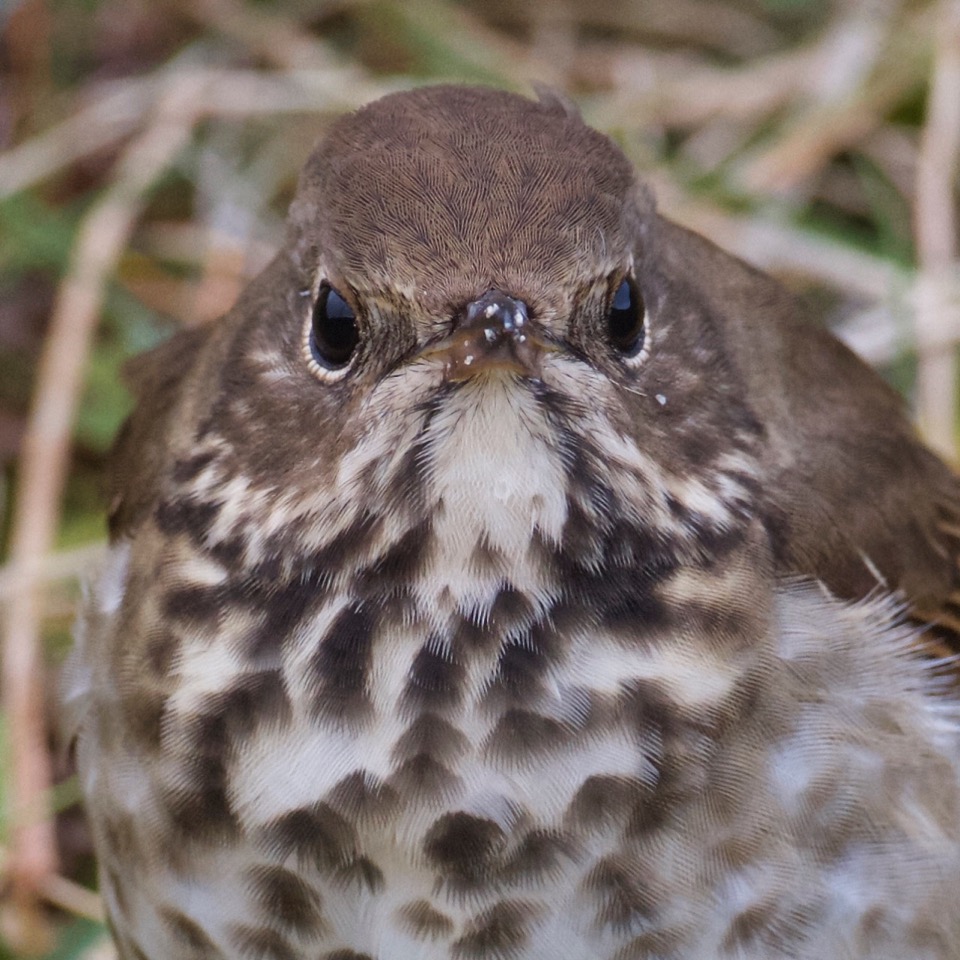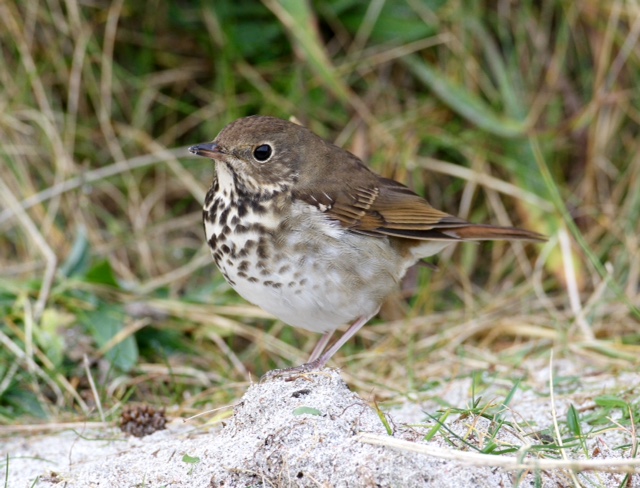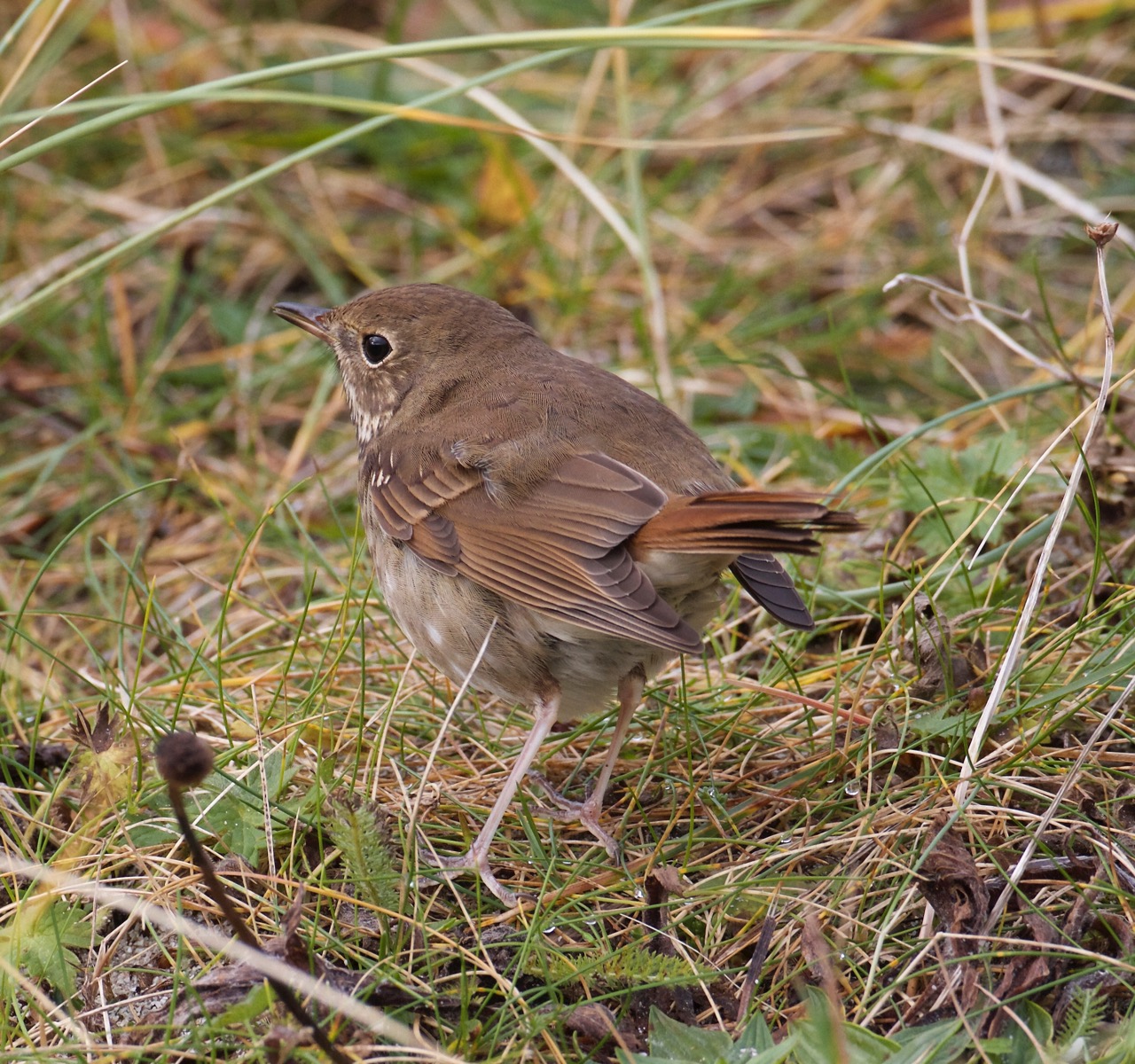With half term in prospect I arranged to visit my friend Roger, who lives in the Outer Hebrides. A few days' birding and catching up seemed a good way to blow away the cobwebs of the term so far and set me up for the increasingly cold, dark and damp run into the Christmas holidays. The remnants of Hurricane Gonzalo were blowing through the UK on the day I was travelling up and I joked with Roger that it might bring in some interesting North American birds — he said it had only brought torrential rain so far. Arriving at Benbecula airport in 50mph crosswinds was not a promising start and our first full day was a wet, windy and gloomy affair. But lots of good birds and, as we had done two years ago on a similar visit, we started to draw up a list. Target to beat: seventy-six.
We covered a fair bit of Benbecula and North Uist picking up most of the usual suspects, plus some highlights like a Great Skua on Berneray. For me, coming from the depths of Berkshire, large flocks of Barnacle Geese were a treat and dozens of Sanderling scuttling on the tideline always bring a smile to one's face. The count had crept over fifty — a decent day's work — but we were still missing some "bankers", including Robin, Chaffinch and Song Thrush — not quite as surprising as that might seem on these near treeless and watery islands. We headed for North Uist for a final loop and ended up walking on the beach and machair at Balranald, part of the local RSPB reserve. No luck with the Corn Bunting, Linnet, Goldfinch or, just maybe, Lapland Bunting that we had hoped for, but there were plenty of gulls, waders and gorgeous flocks of Twite.
The sky was darkening and spots of rain were falling again so we headed for the car and drove down the track towards the reserve centre and the road home. Just as we reached the tarmac road a small, dark, speckled bird flashed across the windscreen and landed on the grassy bank next to us. "Song Thrush!" exclaimed Roger hopefully. "Pipit" I suggested, but it flew again to the brow of the bank where we could only just see the top of its head.
It had been a long day, we were cold, tired and a little damp, and a beer, supper and a warm fire were only about half an hour's drive away. It would have been so easy just to have shrugged our shoulders and driven on. But there was the chance to add Song Thrush to the day list so we decided to investigate further.
We moved from the car and skirted around the bank hoping to get a better view of the bird but only succeeded in flushing it into a large, sandy depression. It seemed quite happy there and tolerated us moving quite close to it. The light really wasn't great and the rain was getting heavier; at least we were reasonably protected from the strong wind. The bird just didn't look right: mostly because it was so sodden and bedraggled, but also because the few details we could make out just did not add up to anything that we were familiar with. We set about noting distinctive features of the bird. Its spotted breast had "thrush" written all over it but the bird was too small, almost Robin-like. "Must be one of those funny North American thrushes", Roger decided so, having taken a few photos and jotted some more notes we hastened the short distance back to the car to grab the Collins Guide.

One of the first shots of the rather bedraggled Hermit Thrush on Wednesday evening (Photo: Roger Auger)
Well, there weren't many options and Hermit Thrush fitted best. We memorised its diagnostic features and headed back to our bird. Large spots matched and a pale half-collar was particularly striking. Our job was made harder by the fact that the bird was clearly drenched and the wind constantly ruffled its feathers. Indeed, the water made the bird look darker and it was definitely harder to pick out any reddish tinge to its tail and wing panels as a result. But at certain angles we caught glimpses of chestnut and its wing and tail flicking were further reassurance. Long, pink legs and a faint wing bar were also discernible. We quite wanted it to fly so that we might see its distinctive black and white underwing — but not too far!
We continued to watch through shivering binoculars, snap photographs in the fading light and pencil notes into an increasingly wet and unyielding notebook. It was starting to sink in just how special this bird was — we were later to discover that there had been only nine British records of Hermit Thrush up to the end of 2013 — and a rising excitement focused our minds and distracted from the cold. The seriousness of our situation dawned on me and anxiety merged with the excitement. Who would believe us and what were we supposed to do? Fortunately Roger, more familiar with such an occasion, had the phone number of Brian Rabbitts, until recently bird recorder for the islands, and, having moved to the top of the depression to get a signal, managed to leave a message for him. That left us huddled in worsening light and weather, watching over the bird and hoping that Brian would arrive soon. The thrush, meanwhile, seemed remarkably content, hopping around the depression and finding the occasional morsel.
Thankfully, it didn't take long for Brian to appear and we were delighted that he agreed with our identification. Having spent a while longer enjoying our exciting discovery, and frustratingly failing to report the sighting on my BirdGuides app due to lack of signal, we headed for home and the reward of a delicious supper, washed down with a celebratory glass or two. While we flicked through the photographs that Roger had taken we pondered our extraordinary good fortune: if the Hermit Thrush hadn't chosen just that moment to flick across the track we — and likely anyone else — would have been oblivious to its existence. It does make you wonder just how many exciting and unusual birds go completely unnoticed on these islands. The bird gods were smiling on us that day, for sure.
We set off anxiously the next morning hoping the bird would still be there. Arriving in considerably better weather than the day before we found three local birders looking a little disconsolate that the bird was not showing. We went with them cautiously down to the sandy depression and in no time at all the bird popped up on one of the banks. It was in much better shape than the day before and its colours were much truer and easier to make out. The better light and the confiding nature of the bird allowed for some really good photographs. We sat and enjoyed both the bird and the steady flow of arrivals at a big Hebridean twitch — nine including us — before heading back to the house for breakfast. We went back in the afternoon for further views in even better conditions but by the following day the bird could not be found.

The thrush was looking altogether healthier by Thursday, and showed extremely well to a small crowd throughout the day in improving weather conditions (Photos: Martin Benson)
The excitement of our lucky find buoyed us through the next couple of days' birding and even eased the pain of us falling well short of our previous list total. But what do lists matter when just one bird can provide such fun and excitement? And the thrill of each occasion of soaring White-tailed Eagles, Hen Harriers quartering across the moor and clouds of squelching Skylark over the machair. Indeed, it was surprising how exciting and fulfilling it was finally to find a Robin and a Chaffinch — but we never did get our Song Thrush!

Big Hebridean twitch! Birders watching the Hermit in its favoured sandy depression on Thursday (Photo: Roger Auger)




